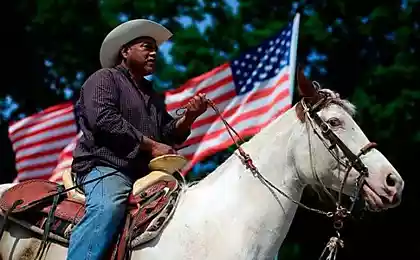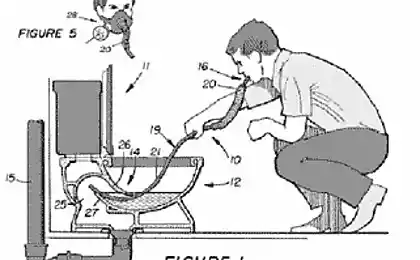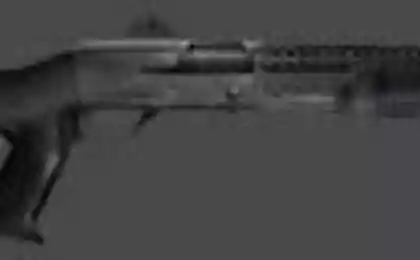1359
The Civil War in the United States - the place (Part 1) (48 photos)
Last year marked 150 years since the end of the American Civil War. Although at the time the photo was still "in its infancy", the photographers of the time made thousands of photographs depicting the harsh reality of war and those that participated in it. In an age when his brother went to his brother, and the future of the United States was not known, these pictures give hungry public at least some information from the trenches, with rivers, farms and cities find themselves in the midst of war. This issue - one of the three parts of the project on the Civil War in the United States and places where it was held: warships, prisons, hospitals, town and simple farm - where history was made. Do not forget that these pictures were taken 150 years ago - when the US government was only 85 years old.
1. Allan Pinkerton on horseback during the Battle of Antietam near Sharpsburgom, Maryland. Before the war, he founded the Pinkerton National Detective Agency Pinkerton. In 1861, but allegedly planned the murder of Lincoln and later became head of intelligence (the predecessor of the US special services). (AP Photo / Library of Congress, Alexander Gardner)

2. Fort Sumter, South Carolina, in April 1861, under the flag of the Confederacy. The first shots of the Civil War took place April 12, 1861, when the Confederation opened fire on Fort Union. The shelling lasted for 34 hours. April 13 Union forces have made many attempts to take the fort, but only managed to grab his February 22, 1865, after the Confederation had left Charleston. (NARA)
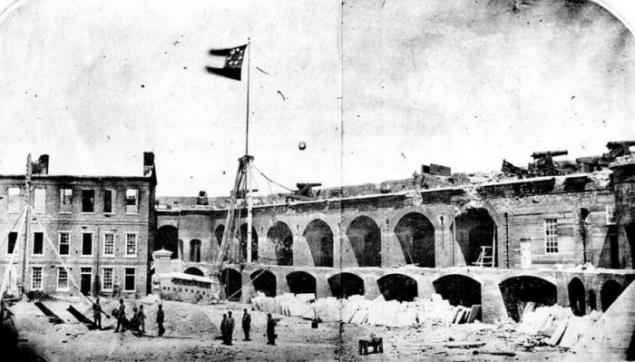
3. Yorktown, Virginia, loading the ship. Photos from the main stage of the war - Campaign on the peninsula (May-August 1962) (LOC)
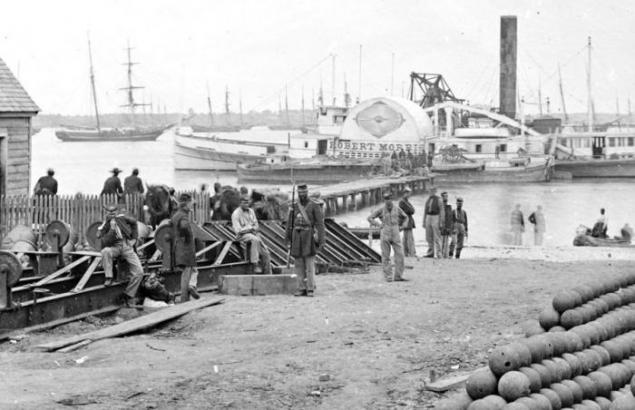
4. Prisoners Confederates near Petersburg, Virginia, in June 1864. (Timothy H. O'Sullivan / LOC)

5. View of Washington junction 3rd and Indiana Avenue, about 1863. In the foreground of Trinity Episcopal Church, in the background - the unfinished Capitol building. Construction of the Capitol stopped in the early years of the war, but in the past - will continue. (LOC)
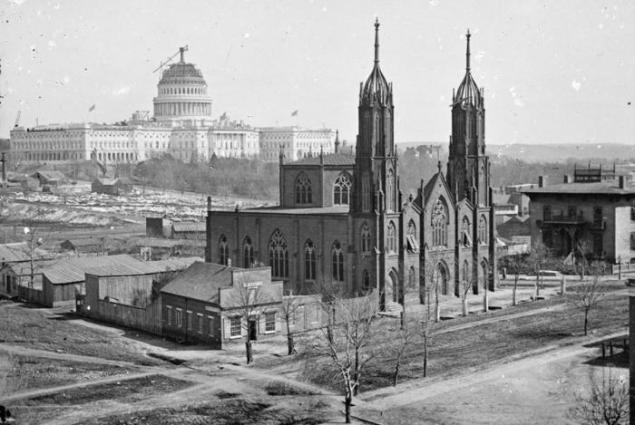
6. Fortifications at Yorktown, Virginia, during the campaign in the peninsula in 1862. (James F. Gibson / LOC)

7. March 1863, the destroyer "Essex". 1000-ton warship, which was once a steam ferry was used by the US Army in the Civil War in 1861. The ship was transferred to the US Navy in 1862, he took part in several operations on the Mississippi River, including the seizure of Baton Rouge and Port Hudson in 1863. (LOC)
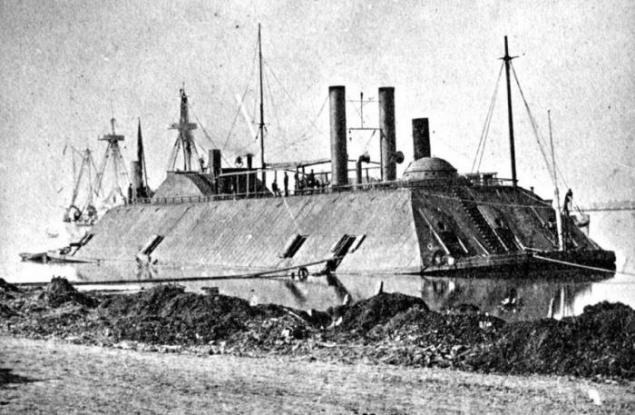
8. Camp infantry Belle Plain, Virginia, in March 1862, three weeks after the Battle of Chancellorsville. (AP Photo / Library of Congress)
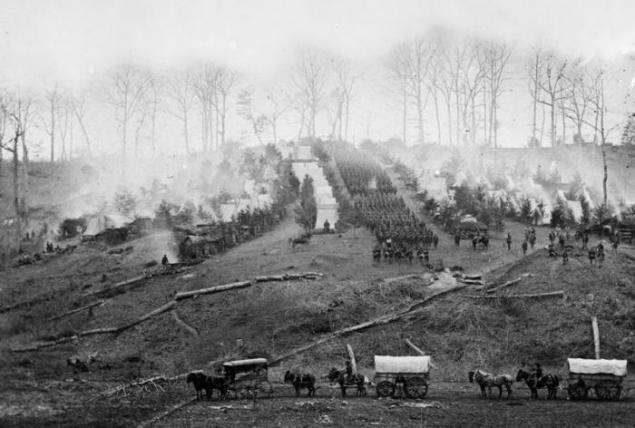
9. Morris Island, South Carolina. Affected muzzle guns Parrot. (Haas & Peale / LOC)

10. On the steps of the Capitol Building in Nashville, Tennessee, in 1864. (George N. Barnard / LOC)

11. The process of inflating the balloon with hydrogen. These balloons were used by the US Army for reconnaissance. (Mathew Brady / NARA)
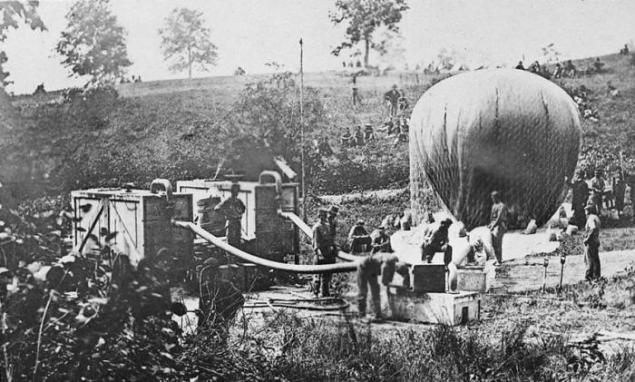
12. Scene from Alexandria, Virginia, in August 1863. Shop 'Price, Birch & Co., merchants, slaves. " (LOC)
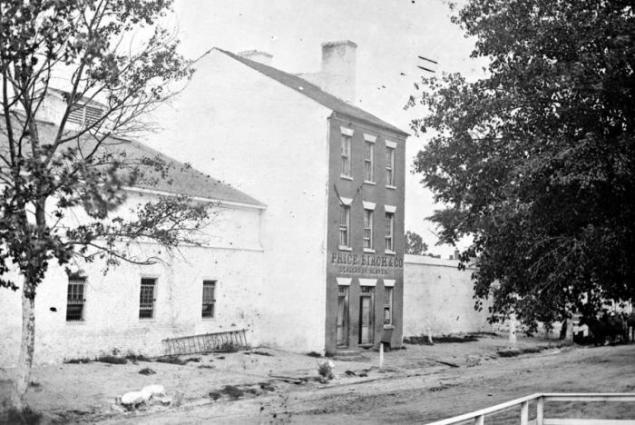
13. Cannonballs in Washington. (NARA)
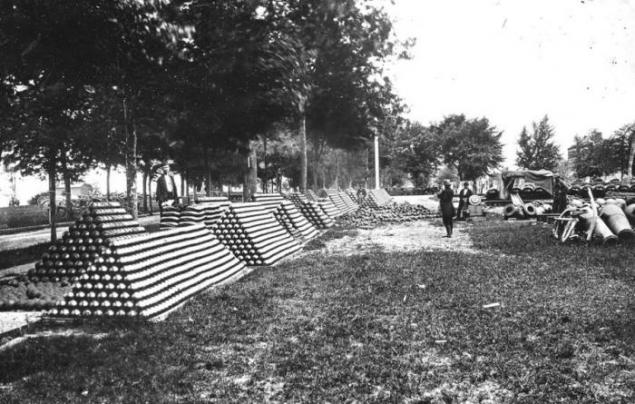
14. Captured rebels are waiting for transportation at Belle Plain, Virginia. (Mathew Brady / NARA)
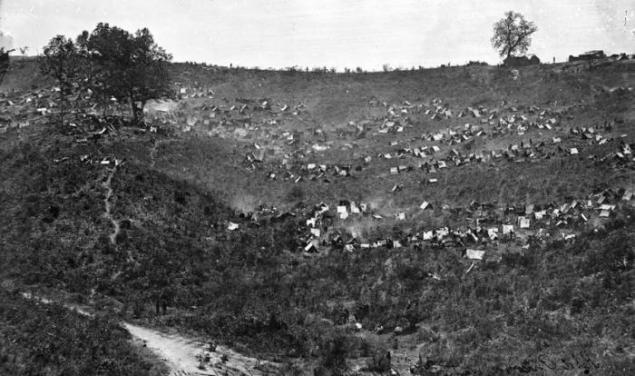
15. Wounded soldiers near Marys Heights, Fredericksburg, Virginia, after the Battle of Spotsylvania Court House in 1864. (Mathew Brady / NARA)

16. Ship "Stonewall" was built in Bordeaux, France, and weighed 1390 tons. When the ship crossed the Atlantic, reaching Havana, Cuba, he was already in May 1965, and the war ended. The ship was taken under the wing of the Spaniards, and soon transferred it to the US government. (Bell & Bro. Photographers / LOC)
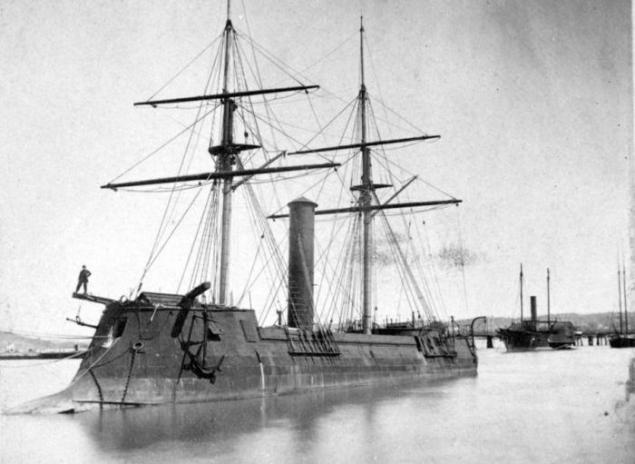
17. Prison Andersonville, Georgia, August 17, 1864. It held about 13 000 of 45 000 prisoners of war of the Union, and all of them died in appalling conditions - from hunger, disease or violence by the invaders. (LOC)

18. Prisoners Union near the main gate of the prison Andersonville. (NARA)

19. The dead horses around the house Trostl after the Battle of Gettysburg in July 1863. Major-General Daniel Sikls used this house as a headquarters during the Battle of the Union and Confederate forces fought among rural homes. (LOC)

20. The public execution in Washington, DC November 10, 1865. Henry Wirz, former commander of the Confederate prisoner of war camp was Dobrošov, and then hanged for abuse of authority. (LOC)
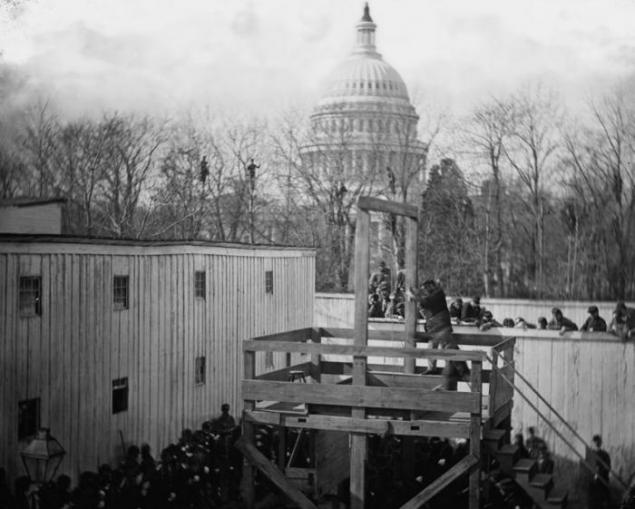
21. Blacks prepare for cotton gin machines Cotton plantation Smith, Port Royal Island, South Carolina, in 1862. (AP Photo / Library of Congress / Timothy H. O'Sullivan)
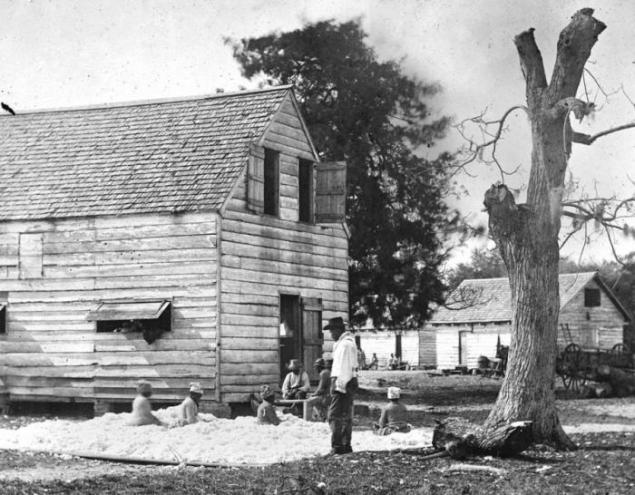
22. The officers of the 69th Infantry Regiment at Fort Corcoran, Virginia, Colonel Michael Corcoran. (Mathew Brady / NARA)
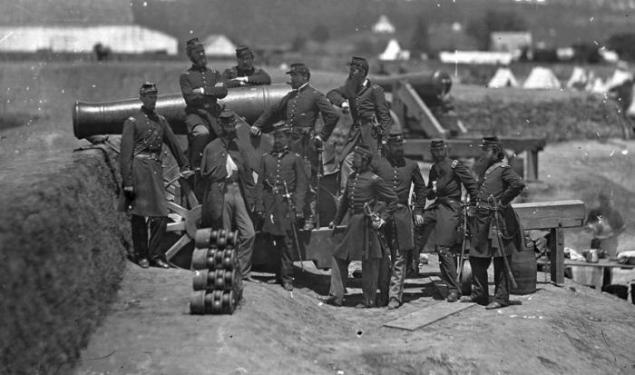
23. Federal camp by the river Pamunki, Virginia, in May 1862. (Alexander Gardner / LOC)

24. "Harvest of Death" - which has already become well-known scene of the effects of the Battle of Gettysburg in July 1863. (Timothy H. O'Sullivan / LOC)
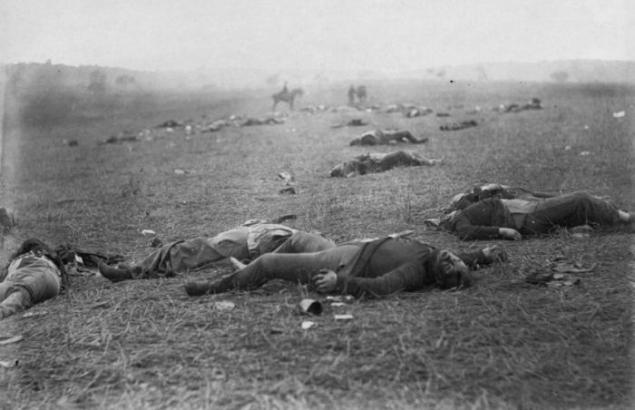
25. The Federal cavalry at Sudley Ford, Virginia, the First Battle of Bull Run in March 1862. (George N. Barnard / LOC)

26. Petersburg, Virginia, the first federal army entered the city in April 1865. (John Reekie / LOC)
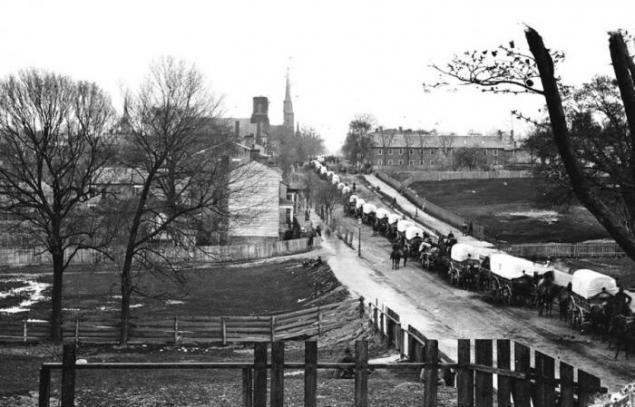
27. Union forces during the Battle of Seven Pines against General Thomas Jackson and his Confederate troops near Richmond, Virginia. The battle took place on May 31 and June 1, 1862. (AP Photo / Mathew B. Brady)
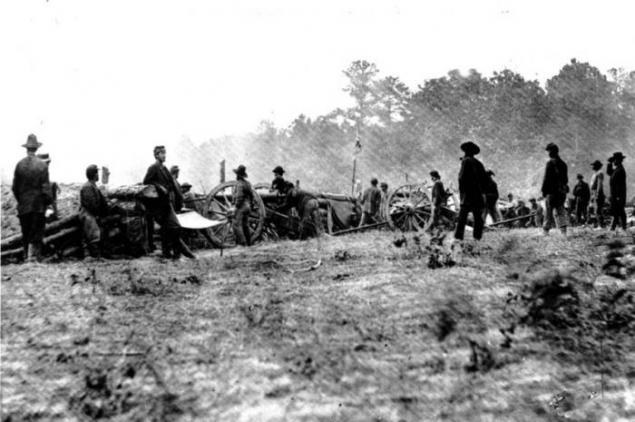
28. Dead Confederates among the weapons behind a stone wall at the foot of Marys Heights near Fredericksburg, Virginia, May 3, 1863. During the Second Battle of Fredericksburg Union force to break through the Confederate line at this point. (Mathew Brady / NARA)
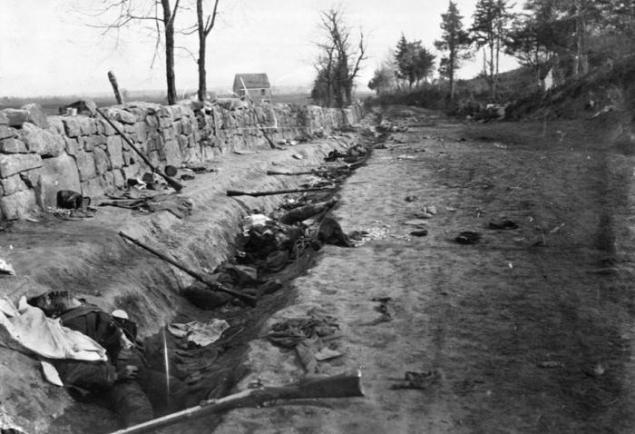
29. Battleship "Galena" after the recent sn Confederation actions on the James River, Virginia, in 1862. (James F. Gibson / LOC)
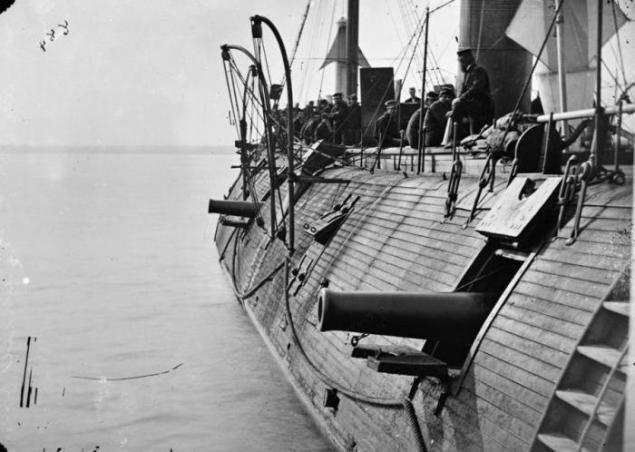
30. Inside the hospital, "Heavud" in Washington in 1864. The hospital was opened in September 1862 and closed in May 1866 after the war. (LOC)
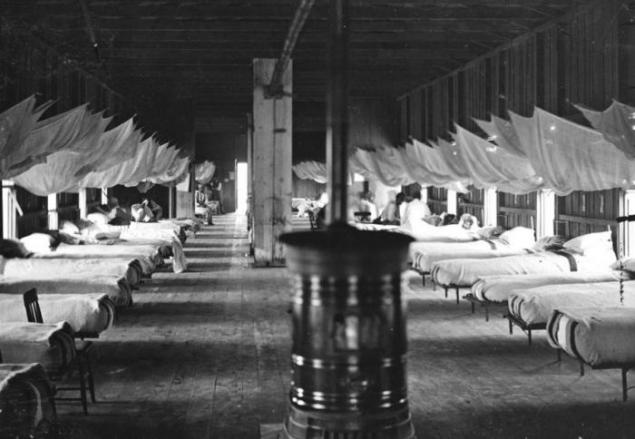
31. On the river Pamunki, Virginia. It was the largest base of the Union Army in 1862, during the campaign in the peninsula. (LOC)
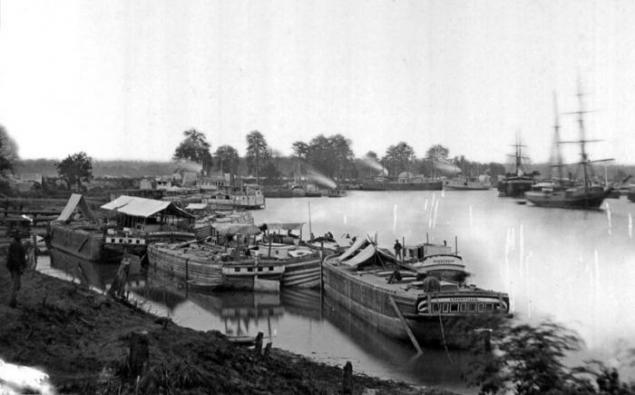
32. Black Union soldiers in front of the building where the auction of slaves on Whitehall Street in Atlanta, Georgia, in 1864. (George N. Barnard / LOC)
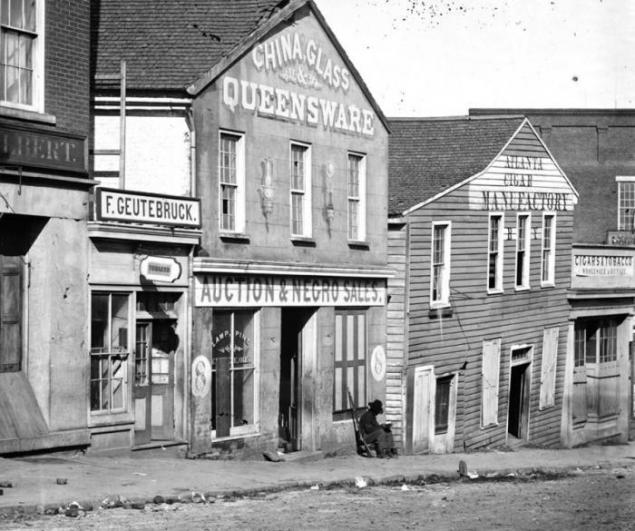
33. Strengthening the rebels to Atlanta in 1863 or 1864. (George N.Barnard / LOC)
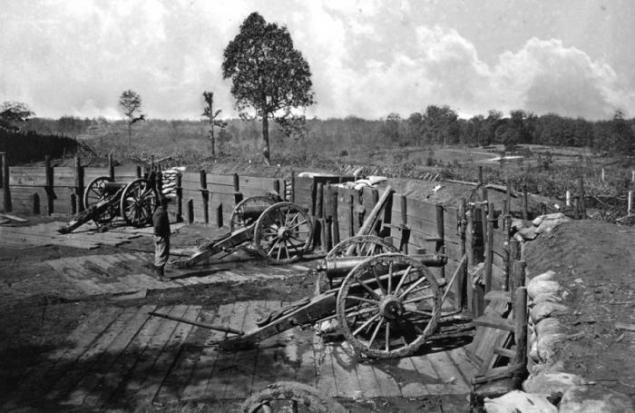
34. African Americans collect the remains of dead soldiers after the battle near Cold Harbor, Virginia, in April 1865. (LOC)
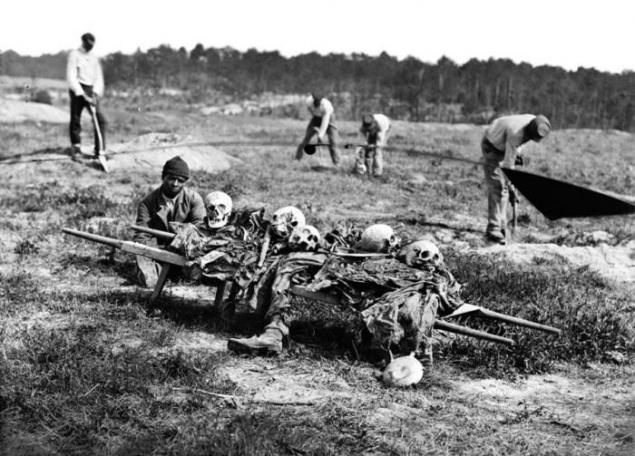
35. Soldiers on cars in a railway depot in Atlanta. On the right - the office of the newspaper «Daily Intelligencer». (George N. Barnard / LOC)
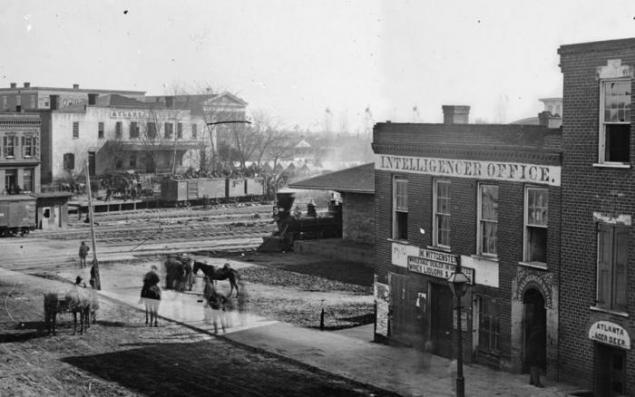
36. The deck and the tower on the battleship "Monitor" on the James River July 9, 1862. It was the first battleship to adopt the US Navy, who fought bravely against the "Virginia" in the Battle of Hampton Roads raid. (James F. Gibson / LOC)
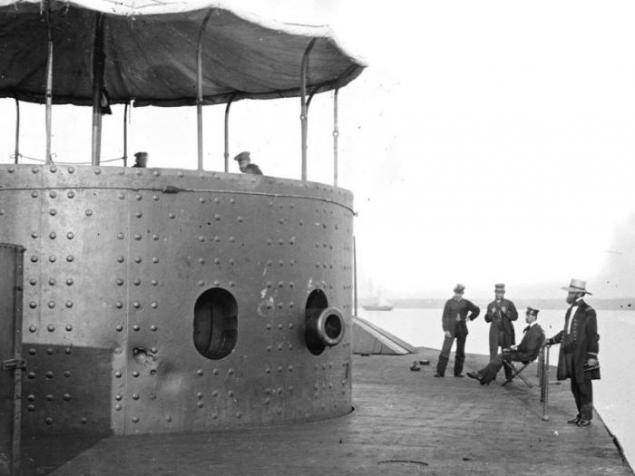
37. Pontoon Bridge near Petersburg, Virginia, in April 1865. (LOC)
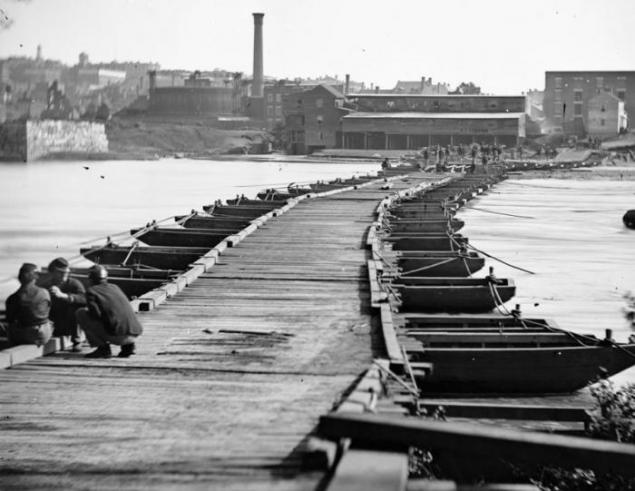
38. Camp battery Tennessee during the siege of Vicksburg in Johnsonville in 1864. (AP Photo / Library of Congress)
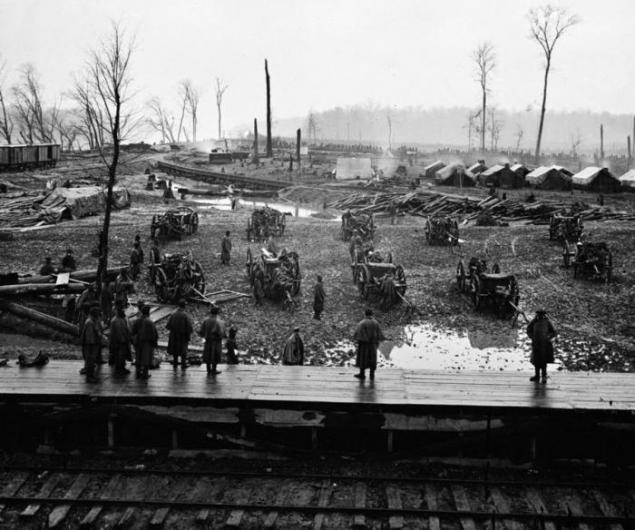
39. A former slave (in the center, hands in his pockets), and now a soldier in the service of standing with other soldiers of the army of the Potomac near Fredericksburg. (AP Photo / Mathew B. Brady)
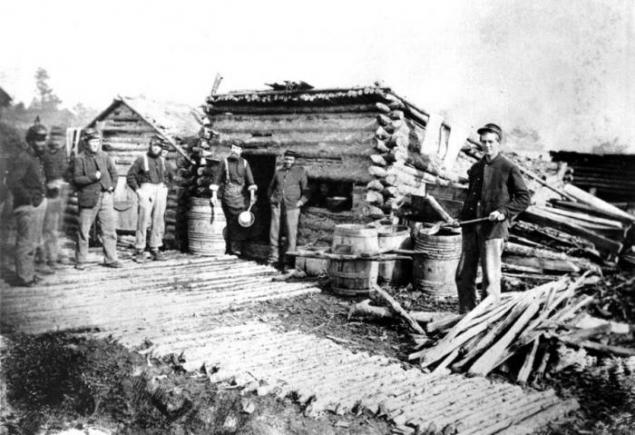
40. The bodies of the soldiers on the ground in front of the church after the Dunker Battle of Antietam in Maryland in September 1862. (Alexander Gardner / LOC)

41. Part of the 50th Engineering Brigade building a road on the southern bank of the River North Anna, near Jericho Mills, Virginia, May 24, 1864. (Timothy H. O'Sullivan / LOC)
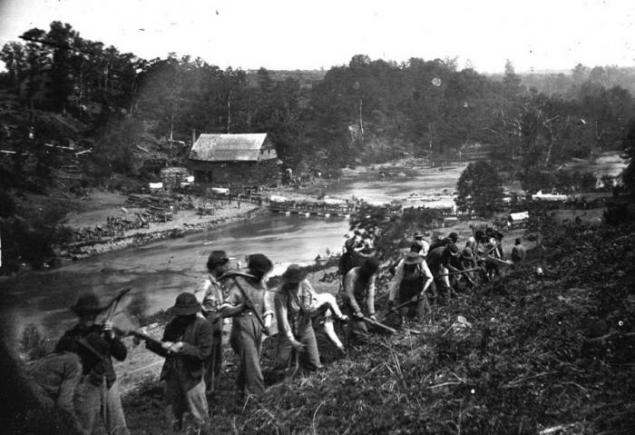
42. Dead Confederates along the fence near the road in Hagerstown after the Battle of Antietam in September 1862. (Alexander Gardner / LOC)

43. View of the burned district of Richmond in Virginia and the Capitol across the Canal Besin in 1865. City was precipitated by Union troops over 9 months, after which the army of General Robert E. Lee left the city in April 1865. (LOC)
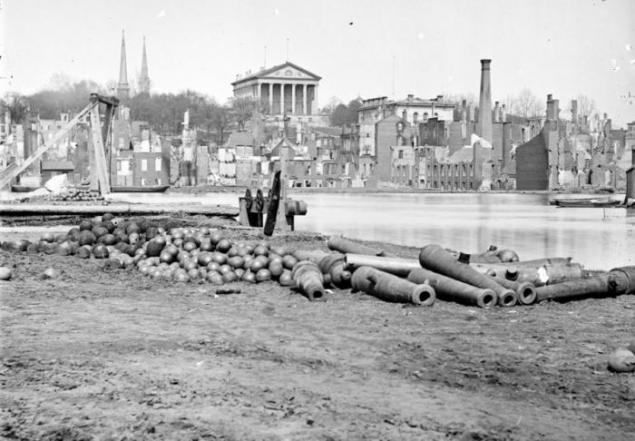
44. Baptist Church in Fredericksburg, Virginia. Photos from the backyard warehouse, made May 20, 1864. (James Gardner / LOC)
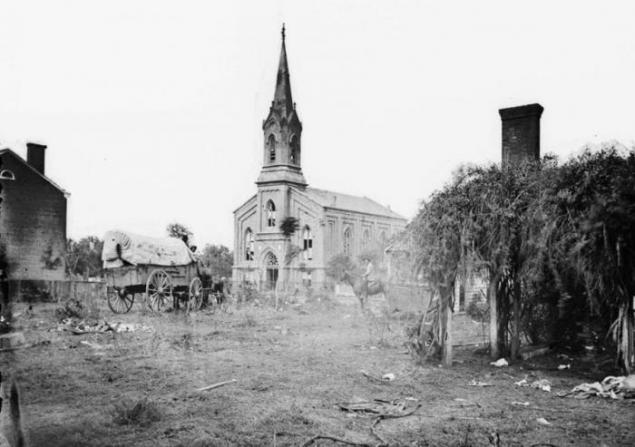
45. The ruins of the affected area in Atlanta, Georgia, Atlanta Campaign, after summer 1864. After capturing the city, Major William T. Sherman began his devastating march to the sea, and on December 21 last, seized the port of Savannah. (Mathew Brady / NARA)
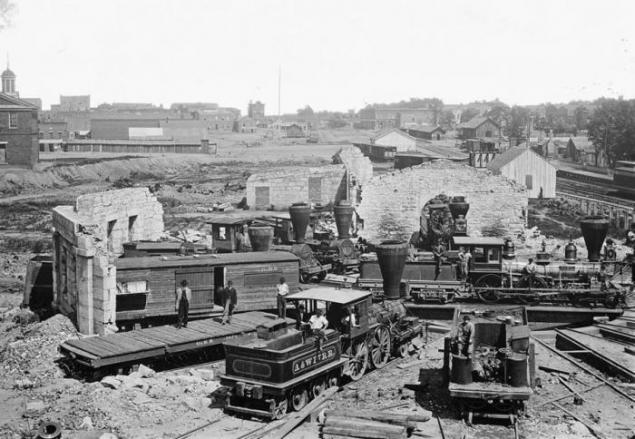
46. View of the Columbia, South Carolina, with the Capitol after the occupation of the army of the Union in 1865, during which the city was destroyed. (Mathew Brady / NARA)
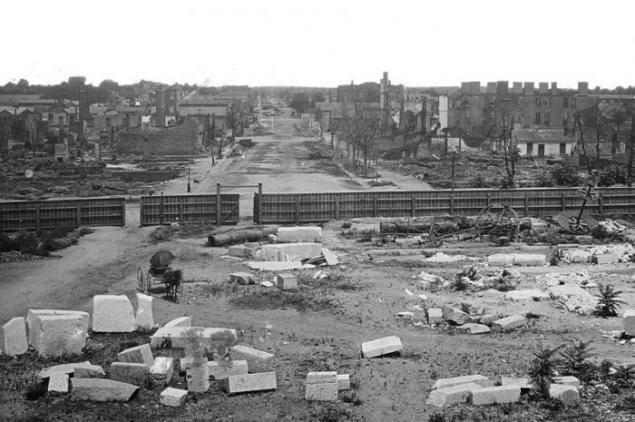
47. The territory of the destroyed weapons cache in Richmond, Virginia, in 1865. (LOC)
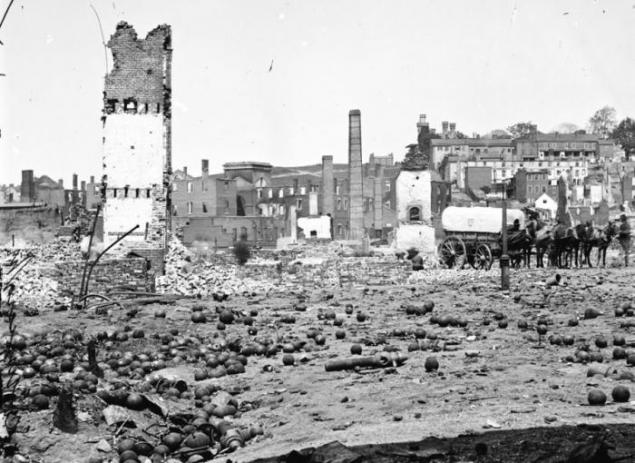
48. Residents walk past the ruins at Richmond in April 1865. Richmond was the capital of the Confederate States of America during the Civil War. After a long siege in 1865, when the troops of General Ulysses S. Grant were willing to take the city, Confederate troops were ordered to evacuate, destroying bridges and all the provisions. Richmond engulfed by fire. About a week later, General Robert E. Lee surrendered to Grant at Appomattox nearby town of April 9, 1865. (Alexander Gardner / LOC)
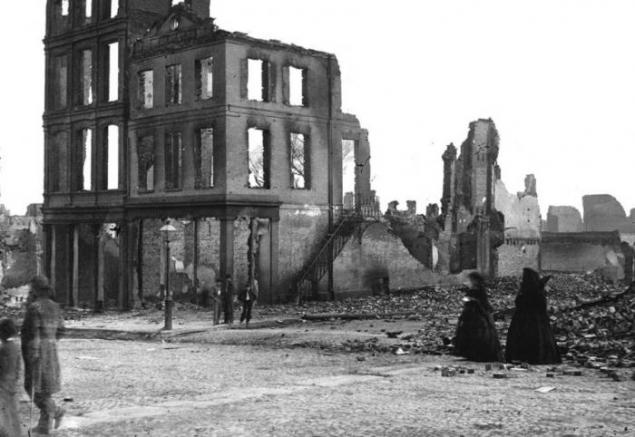
1. Allan Pinkerton on horseback during the Battle of Antietam near Sharpsburgom, Maryland. Before the war, he founded the Pinkerton National Detective Agency Pinkerton. In 1861, but allegedly planned the murder of Lincoln and later became head of intelligence (the predecessor of the US special services). (AP Photo / Library of Congress, Alexander Gardner)

2. Fort Sumter, South Carolina, in April 1861, under the flag of the Confederacy. The first shots of the Civil War took place April 12, 1861, when the Confederation opened fire on Fort Union. The shelling lasted for 34 hours. April 13 Union forces have made many attempts to take the fort, but only managed to grab his February 22, 1865, after the Confederation had left Charleston. (NARA)

3. Yorktown, Virginia, loading the ship. Photos from the main stage of the war - Campaign on the peninsula (May-August 1962) (LOC)

4. Prisoners Confederates near Petersburg, Virginia, in June 1864. (Timothy H. O'Sullivan / LOC)

5. View of Washington junction 3rd and Indiana Avenue, about 1863. In the foreground of Trinity Episcopal Church, in the background - the unfinished Capitol building. Construction of the Capitol stopped in the early years of the war, but in the past - will continue. (LOC)

6. Fortifications at Yorktown, Virginia, during the campaign in the peninsula in 1862. (James F. Gibson / LOC)

7. March 1863, the destroyer "Essex". 1000-ton warship, which was once a steam ferry was used by the US Army in the Civil War in 1861. The ship was transferred to the US Navy in 1862, he took part in several operations on the Mississippi River, including the seizure of Baton Rouge and Port Hudson in 1863. (LOC)

8. Camp infantry Belle Plain, Virginia, in March 1862, three weeks after the Battle of Chancellorsville. (AP Photo / Library of Congress)

9. Morris Island, South Carolina. Affected muzzle guns Parrot. (Haas & Peale / LOC)

10. On the steps of the Capitol Building in Nashville, Tennessee, in 1864. (George N. Barnard / LOC)

11. The process of inflating the balloon with hydrogen. These balloons were used by the US Army for reconnaissance. (Mathew Brady / NARA)

12. Scene from Alexandria, Virginia, in August 1863. Shop 'Price, Birch & Co., merchants, slaves. " (LOC)

13. Cannonballs in Washington. (NARA)

14. Captured rebels are waiting for transportation at Belle Plain, Virginia. (Mathew Brady / NARA)

15. Wounded soldiers near Marys Heights, Fredericksburg, Virginia, after the Battle of Spotsylvania Court House in 1864. (Mathew Brady / NARA)

16. Ship "Stonewall" was built in Bordeaux, France, and weighed 1390 tons. When the ship crossed the Atlantic, reaching Havana, Cuba, he was already in May 1965, and the war ended. The ship was taken under the wing of the Spaniards, and soon transferred it to the US government. (Bell & Bro. Photographers / LOC)

17. Prison Andersonville, Georgia, August 17, 1864. It held about 13 000 of 45 000 prisoners of war of the Union, and all of them died in appalling conditions - from hunger, disease or violence by the invaders. (LOC)

18. Prisoners Union near the main gate of the prison Andersonville. (NARA)

19. The dead horses around the house Trostl after the Battle of Gettysburg in July 1863. Major-General Daniel Sikls used this house as a headquarters during the Battle of the Union and Confederate forces fought among rural homes. (LOC)

20. The public execution in Washington, DC November 10, 1865. Henry Wirz, former commander of the Confederate prisoner of war camp was Dobrošov, and then hanged for abuse of authority. (LOC)

21. Blacks prepare for cotton gin machines Cotton plantation Smith, Port Royal Island, South Carolina, in 1862. (AP Photo / Library of Congress / Timothy H. O'Sullivan)

22. The officers of the 69th Infantry Regiment at Fort Corcoran, Virginia, Colonel Michael Corcoran. (Mathew Brady / NARA)

23. Federal camp by the river Pamunki, Virginia, in May 1862. (Alexander Gardner / LOC)

24. "Harvest of Death" - which has already become well-known scene of the effects of the Battle of Gettysburg in July 1863. (Timothy H. O'Sullivan / LOC)

25. The Federal cavalry at Sudley Ford, Virginia, the First Battle of Bull Run in March 1862. (George N. Barnard / LOC)

26. Petersburg, Virginia, the first federal army entered the city in April 1865. (John Reekie / LOC)

27. Union forces during the Battle of Seven Pines against General Thomas Jackson and his Confederate troops near Richmond, Virginia. The battle took place on May 31 and June 1, 1862. (AP Photo / Mathew B. Brady)

28. Dead Confederates among the weapons behind a stone wall at the foot of Marys Heights near Fredericksburg, Virginia, May 3, 1863. During the Second Battle of Fredericksburg Union force to break through the Confederate line at this point. (Mathew Brady / NARA)

29. Battleship "Galena" after the recent sn Confederation actions on the James River, Virginia, in 1862. (James F. Gibson / LOC)

30. Inside the hospital, "Heavud" in Washington in 1864. The hospital was opened in September 1862 and closed in May 1866 after the war. (LOC)

31. On the river Pamunki, Virginia. It was the largest base of the Union Army in 1862, during the campaign in the peninsula. (LOC)

32. Black Union soldiers in front of the building where the auction of slaves on Whitehall Street in Atlanta, Georgia, in 1864. (George N. Barnard / LOC)

33. Strengthening the rebels to Atlanta in 1863 or 1864. (George N.Barnard / LOC)

34. African Americans collect the remains of dead soldiers after the battle near Cold Harbor, Virginia, in April 1865. (LOC)

35. Soldiers on cars in a railway depot in Atlanta. On the right - the office of the newspaper «Daily Intelligencer». (George N. Barnard / LOC)

36. The deck and the tower on the battleship "Monitor" on the James River July 9, 1862. It was the first battleship to adopt the US Navy, who fought bravely against the "Virginia" in the Battle of Hampton Roads raid. (James F. Gibson / LOC)

37. Pontoon Bridge near Petersburg, Virginia, in April 1865. (LOC)

38. Camp battery Tennessee during the siege of Vicksburg in Johnsonville in 1864. (AP Photo / Library of Congress)

39. A former slave (in the center, hands in his pockets), and now a soldier in the service of standing with other soldiers of the army of the Potomac near Fredericksburg. (AP Photo / Mathew B. Brady)

40. The bodies of the soldiers on the ground in front of the church after the Dunker Battle of Antietam in Maryland in September 1862. (Alexander Gardner / LOC)

41. Part of the 50th Engineering Brigade building a road on the southern bank of the River North Anna, near Jericho Mills, Virginia, May 24, 1864. (Timothy H. O'Sullivan / LOC)

42. Dead Confederates along the fence near the road in Hagerstown after the Battle of Antietam in September 1862. (Alexander Gardner / LOC)

43. View of the burned district of Richmond in Virginia and the Capitol across the Canal Besin in 1865. City was precipitated by Union troops over 9 months, after which the army of General Robert E. Lee left the city in April 1865. (LOC)

44. Baptist Church in Fredericksburg, Virginia. Photos from the backyard warehouse, made May 20, 1864. (James Gardner / LOC)

45. The ruins of the affected area in Atlanta, Georgia, Atlanta Campaign, after summer 1864. After capturing the city, Major William T. Sherman began his devastating march to the sea, and on December 21 last, seized the port of Savannah. (Mathew Brady / NARA)

46. View of the Columbia, South Carolina, with the Capitol after the occupation of the army of the Union in 1865, during which the city was destroyed. (Mathew Brady / NARA)

47. The territory of the destroyed weapons cache in Richmond, Virginia, in 1865. (LOC)

48. Residents walk past the ruins at Richmond in April 1865. Richmond was the capital of the Confederate States of America during the Civil War. After a long siege in 1865, when the troops of General Ulysses S. Grant were willing to take the city, Confederate troops were ordered to evacuate, destroying bridges and all the provisions. Richmond engulfed by fire. About a week later, General Robert E. Lee surrendered to Grant at Appomattox nearby town of April 9, 1865. (Alexander Gardner / LOC)





















